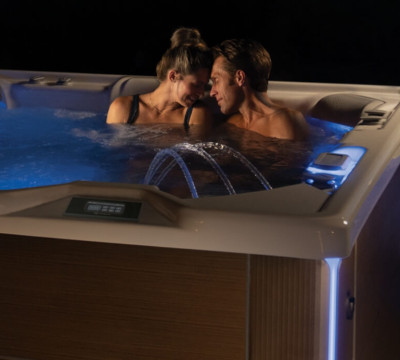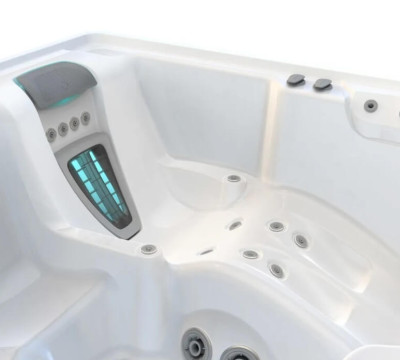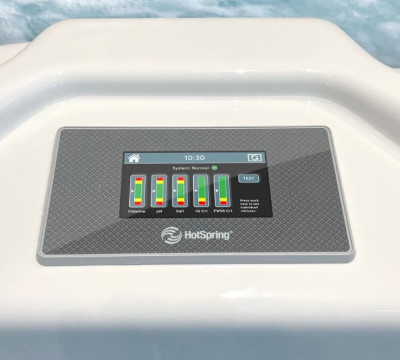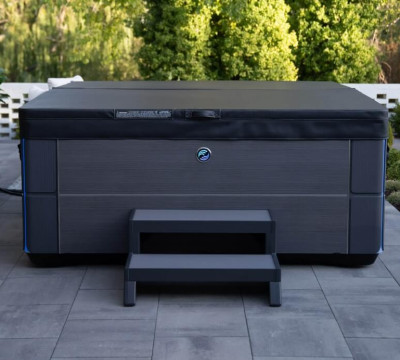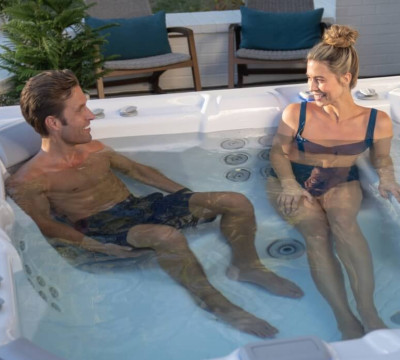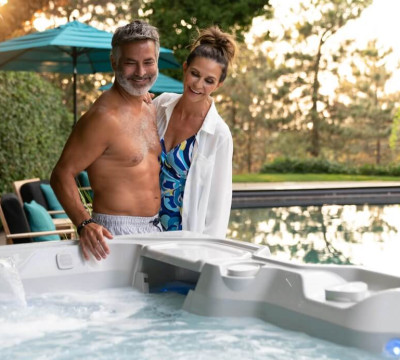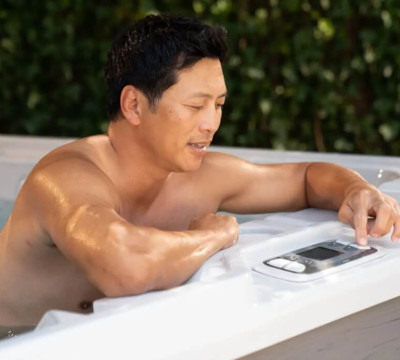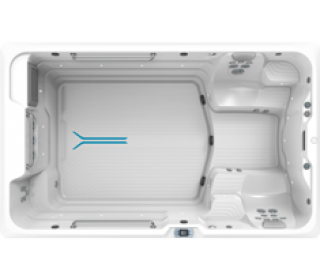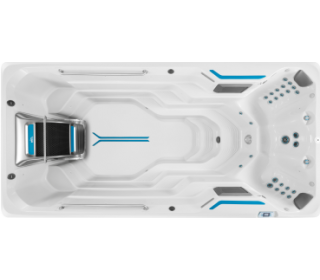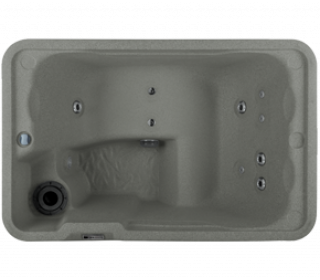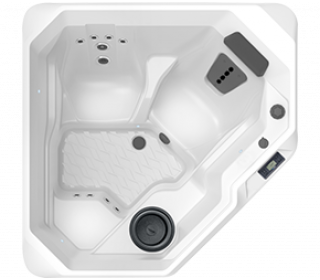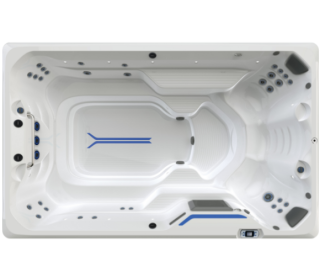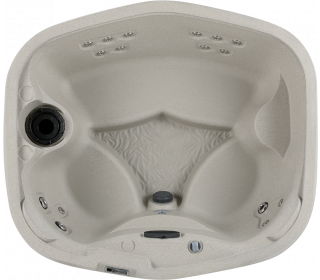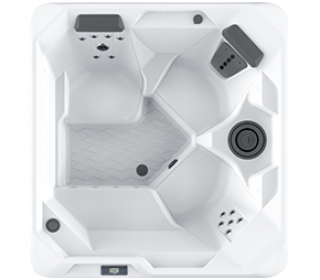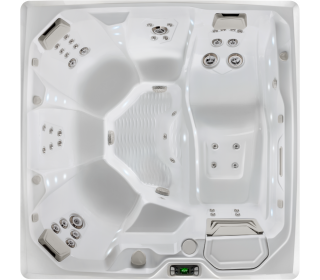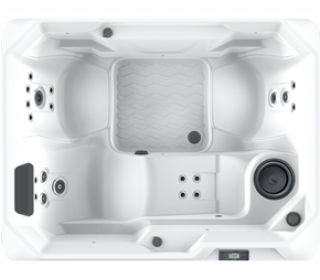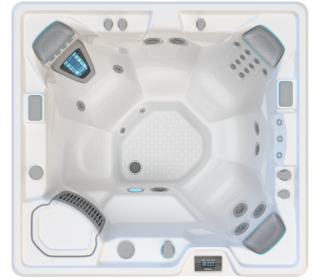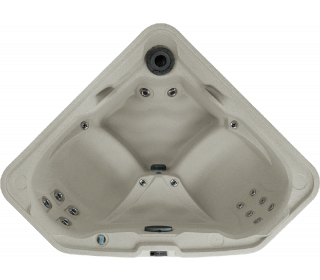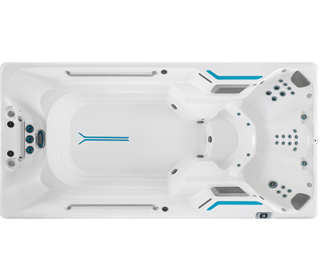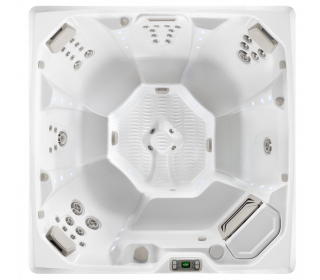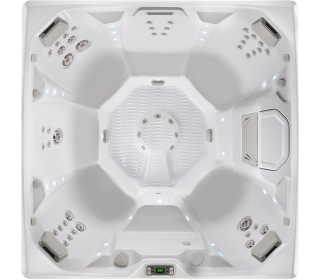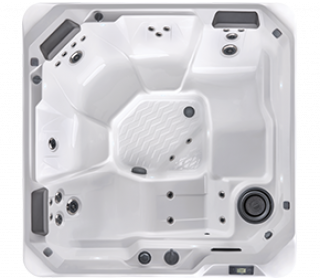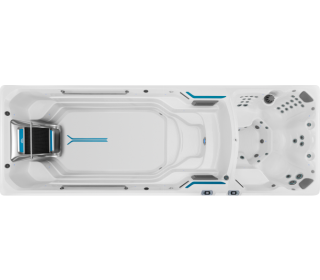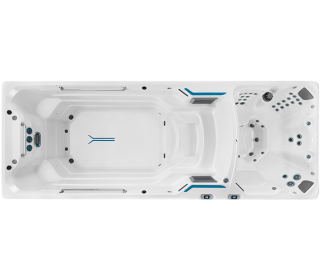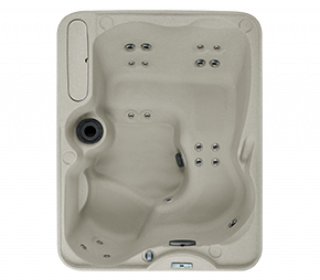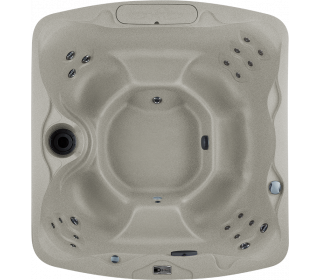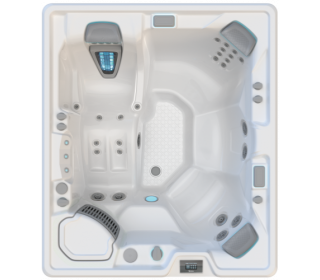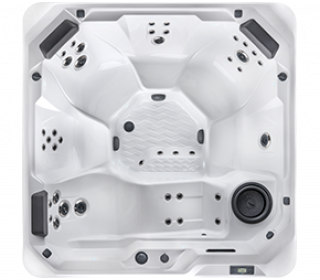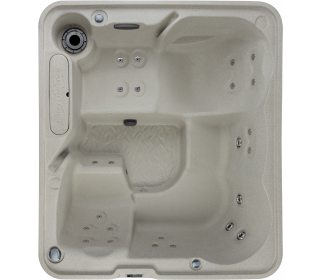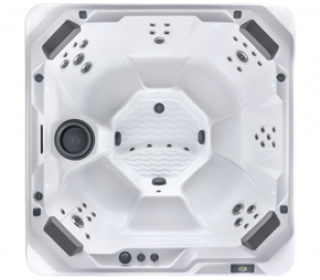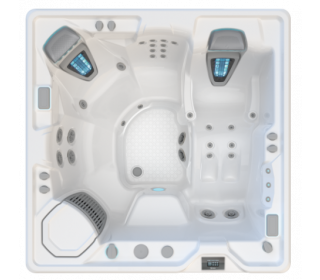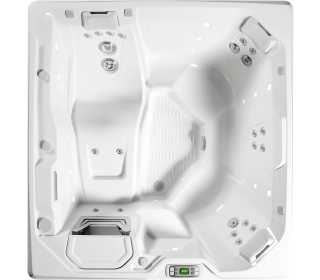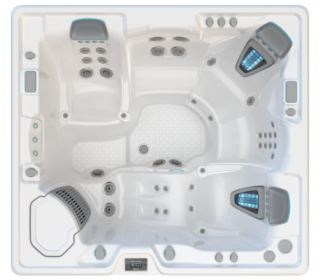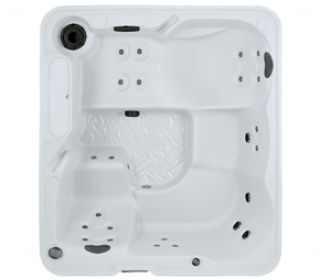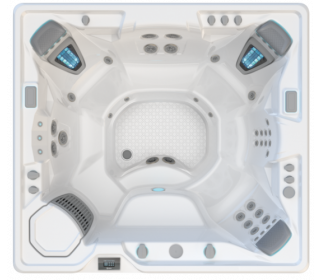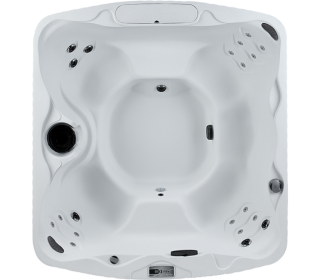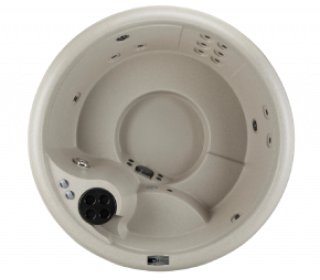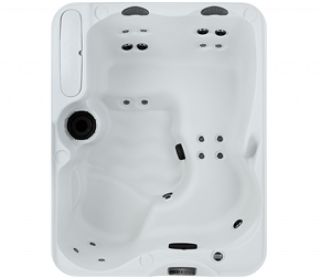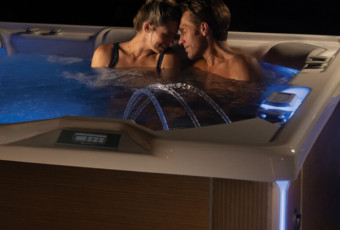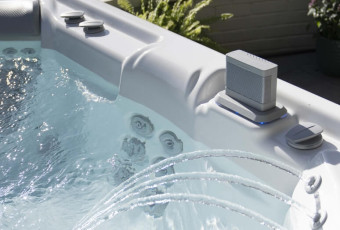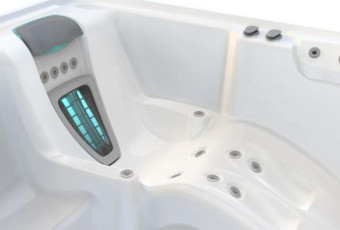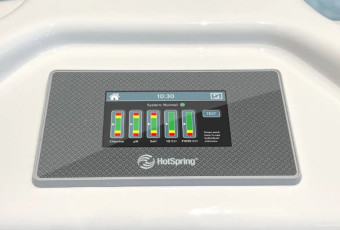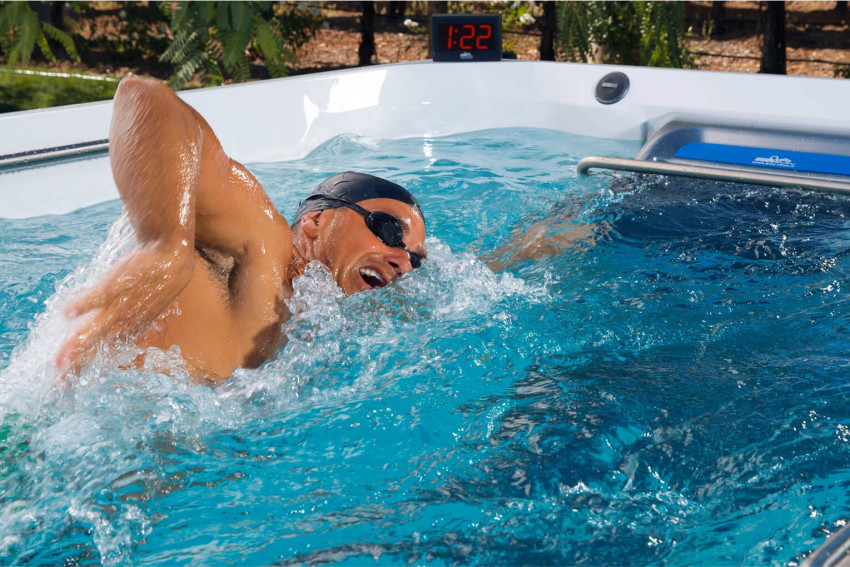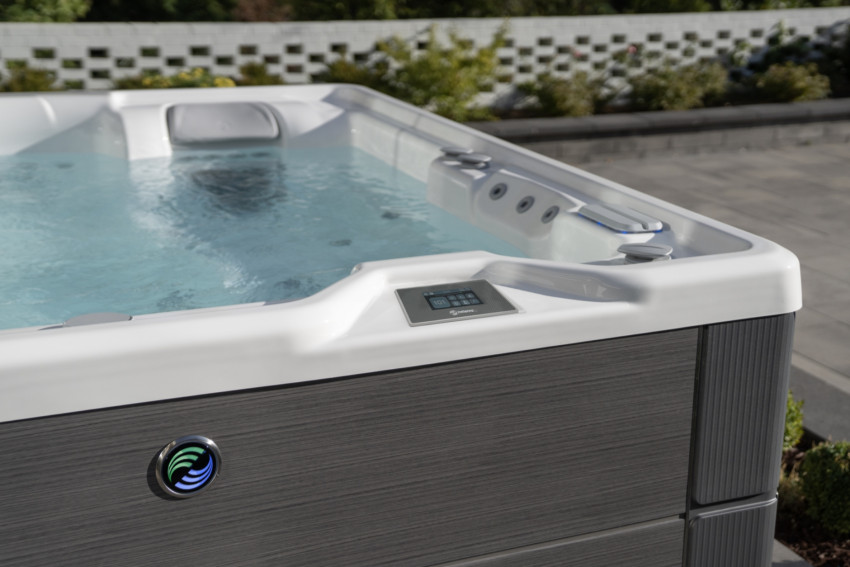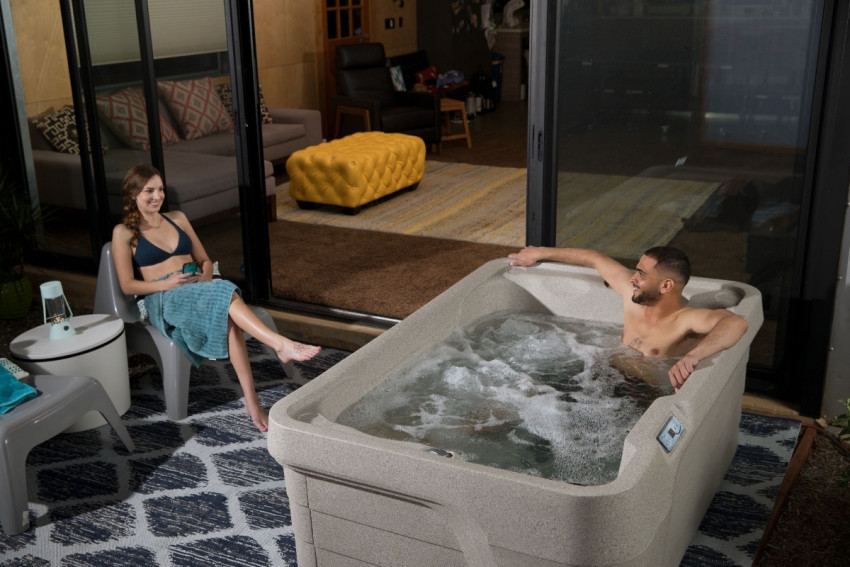One of the most important parts of hot tub upkeep is maintaining the proper pH and alkalinity levels. When the pH in your hot tub is too low, problems such as metal corrosion, high levels of bacteria and burning eyes may occur.
Sodium Bicarbonate (FreshWater® pH/Alkalinity Up) is the best way to raise alkalinity in a hot tub. To lower alkalinity levels, you’ll need to use sodium bisulfate, also known as the FreshWater® pH/Alkalinity Down. Test the pH of your water, add the appropriate product, then test again. Repeat until the pH sits in the ideal range of 7.2 to 7.8.
In this article, you’ll find a detailed step-by-step guide to raising the pH in your hot tub. You’ll also find helpful answers to the most commonly asked questions regarding hot tub pH and alkalinity levels.
How to raise pH but not alkalinity in a hot tub?
When you test the water in a hot tub, there are two measurements that are deeply connected but not quite the same: pH and total alkalinity.
- pH measures the concentration of protons in a solution, which translates to the acidity or alkalinity of your hot tub water. A pH of 7 is perfectly neutral. Water below 7 pH has a higher concentration of protons and is considered acidic. The lower the pH number, the more acidic the water. Water above 7 pH has a lower concentration of protons is considered alkaline. Again, the higher the pH number, the more alkaline the water. A little bit of alkalinity is recommended in a hot tub – it’s wise to aim for 7.2 to 7.8 pH.
- Total alkalinity is a measurement of the dissolved alkaline substances in your hot tub water. It is used to gauge the ability of your hot tub water to neutralise acids. It is measured in parts per million, with the ideal range sitting around 80-120 ppm.
Let’s say you’ve just done a hot tub water test and you’ve found that your total alkalinity is sitting at the high end of the ideal range – let’s say 115 ppm – but your pH is sitting at the low end of the ideal range – let’s say 7.2 pH. Is there a way to raise the pH of your hot tub water, but not the alkalinity?
The short answer is no.
Total alkalinity and pH are inextricably linked. The common way to raise the pH of your hot tub is to dissolve alkaline substances into the water, usually in the form of a product like Hot Spring pH Up. You’ll inevitably raise the rate at which these alkaline substances occur in your water, which will push up your total alkalinity ppm.
This usually isn’t too much of a problem for most hot tub owners – if you get your pH right, total alkalinity tends to follow, so it may simply be a matter of treating your water and waiting a day or so for the chemicals to balance naturally.
How do you increase the pH in a spa pool?
Read on for a step-by-step guide on raising the pH in your hot tub.
Step 1: Test the water.
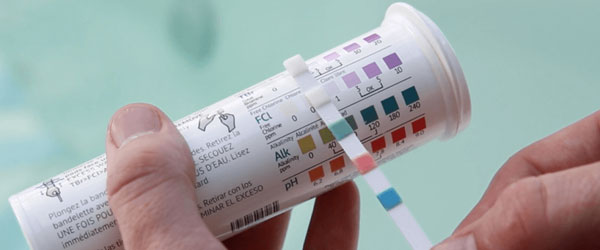
In chemistry a pH below 7 is considered acidic, and a pH above 7 is considered alkaline. But things are a little different for spa pools. A low pH, or water that is too acidic, is considered any number below 7.2. A high pH, or water that is too alkaline, is considered any number above 7.8. The optimal pH level for a spa pool is within this 7.2-7.8 range.
To test the water’s pH level, you’ll need to use test strips, a liquid test kit or a digital tester. It’s recommended to use products that are specifically meant for pools and hot tubs, for example the Freshwater® 5-way Test Strips. Oftentimes, these products will test more than just pH levels. They’ll also look for levels of chlorine, alkalinity and bromine, among others.
When planning to raise or lower pH levels, be sure to test your alkalinity levels as well. Alkalinity and pH are closely intertwined, and you cannot raise one without raising the other. Your levels of pH and alkalinity will help you decide between FreshWater® pH/Alkalinity Down (sodium bisulfate) and FreshWater® pH/Alkalinity Up (sodium bicarbonate) as an agent to increase your hot tub’s pH level.
Step 2: Choose between pH/Alkalinity Down and pH/Alkalinity Up to optimise your hot tub’s pH level.
To bring up alkalinity in a spa pool, use a sodium bicarbonate-based product, like FreshWater® pH/Alkalinity Up. This is the safest and most common way to increase the pH of your spa pool. To lower alkalinity levels, use a sodium bisulfate-based product, like FreshWater® pH/Alkalinity Down.
If you want to increase alkalinity and pH in your spa pool using FreshWater® pH/Alkalinity Up, you should do it carefully - you don’t want to continually bounce between a number that is too high then too low. Add 20mL (one tablespoon) for every 500L your spa pool holds, then test your pH again.
Step 3: Turn on the pumps.
Keeping the air valves closed, turn on your hot tub’s pumps. This way, the water will begin to circulate.
Step 4: Add the appropriate amount of pH/Alkalinity Down or pH/Alkalinity Up to the hot tub filter compartment while the jet pump is running.
If your alkalinity is at a low or normal level, use pH/Alkalinity Up. If your alkalinity is already high, go with pH/Alkalinity Down instead. Adding 1 tablespoon per 100 gallons of water will decrease total alkalinity by 20ppm.
If you’ve chosen to use pH/Alkalinity Up, you’ll need to add one tablespoon for every 100 gallons of water that your hot tub holds. This will increase total alkalinity by 20ppm. For example, if your hot tub holds 300 gallons (1136 litres) of water, you’ll add three tablespoons of pH/Alkalinity Up.
Step 5: Allow the water to circulate.
Step away for at least three hours to allow the pH/Alkalinity Down or pH/Alkalinity Up to circulate completely. Do not cover your hot tub and do not leave your hot tub unattended while open.
Step 6: Turn off the pumps.
After at least three hours, it’s time to turn off the pumps and let the water settle.
Step 7: Test the water again.
Now it’s necessary to test the water again in order to see if your pH and alkalinity levels are in the correct range. Ideally, pH levels should be between 7.2 and 7.8, with an ideal range between 7.4 and 7.6. Alkalinity should fall between 80 and 120 ppm.
Step 8: Repeat the process or drain and refill the hot tub completely.
If your pH and alkalinity levels weren’t too far off to begin with, you might be done with the process of raising the pH in your hot tub! However, you may still have a bit farther to go. If levels are close to where they should be, go ahead and repeat the process.
But in the case that alkalinity and pH levels are still far from the ideal range, it may be best to completely drain out your hot tub and refill it. Sometimes, it’s easier to start fresh, rather than continuing to add chemicals over and over again in hopes that you will be successful. For best results, use a hose filter like the Fresh Start® Clean Screen when refilling your hot tub in order to keep contaminants out. Using a metal sequestrant is also helpful for filtering out any metal build-up in the hot tub.
Frequently Asked Questions
Q: How do I add chemicals to a hot tub for the first time?
A: Before adding chemicals to your spa pool for the first time, you’ll need to figure out the pH level of the untreated water. You can do this with a simple litmus strip. Once you have that baseline you can add appropriate amounts of acidic and alkaline chemicals to ensure the pH level of the treated water sits in that ideal 7.2-7.8 range.
Q: How are pH and alkalinity related?
A: To put it simply, pH levels measure the concentration of acid protons in the water. Alkalinity measures the ability of the water to neutralise or buffer acids. Therefore, alkalinity levels affect the water’s ability to maintain pH levels.
Q: Can I raise the pH level in my hot tub without raising alkalinity?
A: How to raise pH but not alkalinity in a hot tub? As mentioned at the top, you cannot raise your hot tub’s pH level without also raising alkalinity. When you raise or lower the pH level in your hot tub, the chemicals will inevitably also affect the water’s alkalinity levels.
Q: What does total alkalinity mean?
‘Total alkalinity’ tells you the concentration of dissolved alkaline substances in a solution, usually measured in parts per million (ppm). For hot tub water you should aim for a total alkalinity measurement of 80-120 ppm.
Q: How do I lower the pH in a spa pool naturally?
A: You can lower your spa pool pH by following the above procedure and using sodium bisulfate, also known as the FreshWater® pH/Alkalinity Down. If you’re looking for another, more homely solution - although remember that everything is chemicals - try adding a cup of vinegar to the water, testing, then adding more if needed. Note that while ‘natural’ vinegar won’t be as effective as a purpose-built product.
Q: What causes pH to lower in hot tubs?
A: There are a number of possible causes behind lowering of your hot tub’s pH. Your local water may be slightly acidic, causing the pH to decrease every time you top up or refill. It could be that you’ve over-corrected, and added too much pH reducer (FreshWater® pH/Alkalinity Down.)
Q: How do I raise and lower alkalinity levels?
A: You can raise alkalinity by using sodium bicarbonate, also known as the FreshWater® pH/Alkalinity Up. To lower alkalinity levels, you’ll need to use sodium bisulfate, also known as the FreshWater® pH/Alkalinity Down.
Q: How often should I test my hot tub’s pH and alkalinity?
A: It’s best to test your hot tub’s pH and alkalinity levels once or twice each week.
Q: Hot tub test strips: how to read the results?
A: Hot tub test strips will always feature a chart on the side of the bag or container that explains how to interpret the results. Most strips turn different colours and shades based on the concentration of a specific chemical in the water. Simply match the colour of your strip to the corresponding colour on the chart to get your results.
Q: What happens if pH is too low in a hot tub?
A: Low pH means your hot tub water is too acidic. This can cause discomfort during your soak, as the acidity can sting eyes and aggravate your skin. It can also corrode the piping, machinery and surfaces of your spa, ultimately reducing its lifespan. Finally, dropping too low on the pH scale can make it a complex and time-consuming process to get your water back to a safe and comfortable level.
Q: Why is my hot tub pH level always too low or too high?
A: When pH levels are too high, the chlorine in your hot tub won’t work as efficiently. You may begin to notice calcium deposits on the water’s surface. In addition, the water may become cloudy or dull, with a strong chlorine odour. Also, algae growth is common when pH levels are too high. On the other hand, low pH levels can cause grout and plaster erosion, corrosion of metal parts and issues with dry skin and burning eyes.
Q: What happens when alkalinity levels are too high or too low?
A: High alkalinity levels result in decreased efficiency of chlorine, cloudy water, difficulty stabilising pH levels and constant pH increases even with the use of pH reducer. Low alkalinity levels are associated with corrosion of metal parts in the hot tub, burning eyes and dry skin and rapid pH level fluctuations.


